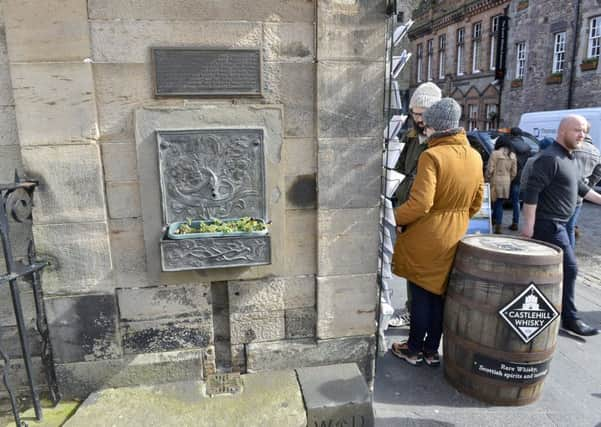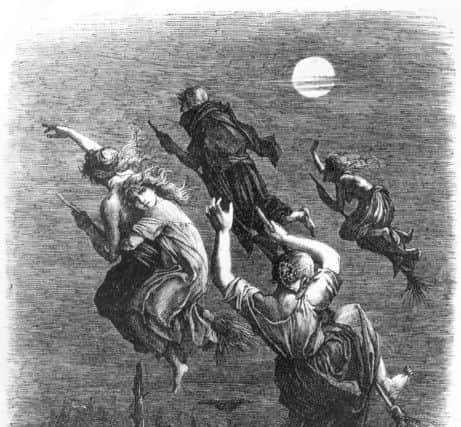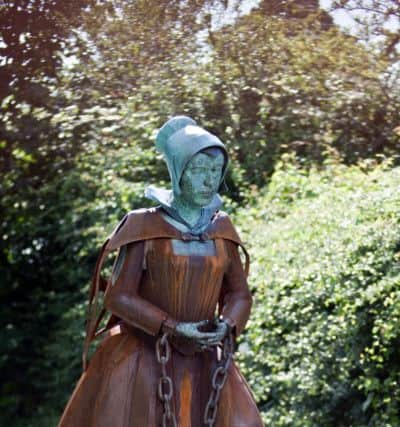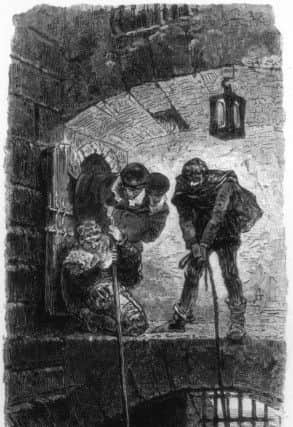Edinburgh's executed '˜witches' deserve tribute: heritage group


But few of those who flock to Edinburgh Castle every day will realise they pass by the most common spot in Scotland for burning witches.
More than 300 alleged witches are thought to have been tortured then put to death in the shadow of the landmark during the 16th and 17th centuries.
Advertisement
Hide AdAdvertisement
Hide AdNow heritage campaigners want to see the women who were killed properly honoured for the first time with a high-profile memorial, such as monument or statue, on the Esplanade.


Edinburgh World Heritage (EWH) wants to kickstart a debate on how to “commemorate the victims of this dark chapter in our history”.
The charity, which is responsible for promoting the centuries of history in the Old and New Towns, said it had been inspired by the recent staging of Arthur Miller’s Salem witch trial play The Crucible at the Royal Lyceum Theatre and the creation of several new memorials across Europe.
Advertisement
Hide AdAdvertisement
Hide AdNicholas Hotham, head of advocacy and outreach at EWH, said it wanted to “encourage a debate” on a suitable memorial. He said: “The persecution of those accused of witchcraft was widespread in early modern Scotland. The hysteria around the trials may have been caused by fear of the ‘other’, of people who were different, or possessed unusual gifts.


“The various memorials we now see around Europe to those persecuted suggest now is the time for an open discussion about how we remember and commemorate the victims of this dark chapter in our history.”
A witches memorial in Edinburgh would be one of the few significant works of art to commemorate female figures from the city’s past, along with Mary Queen of Scots and Queen Victoria.
At least 4000 people were tried in Scotland following the introduction of the Witchcraft Act in 1563. In Edinburgh, trials took place either at the Tolbooth in the Canongate or at the High Court, with executions at Castlehill.


Advertisement
Hide AdAdvertisement
Hide AdThe Castle Esplanade memorial, which would need permission from the council and Historic Environment Scotland, would join prominent statues of both Robert the Bruce and William Wallace if approved.
The idea has been put forward five years after the unveiling of a statue – created by Kelpies sculptor Andy Scott – in Prestonpans, where 81 women were convicted of witchcraft.
A statue was unveiled three years ago in Roughlee, Lancashire, to mark the 400th anniversary of the Pendle Witch Trial, which led to ten people from two families being found guilty and hanged.


Others include a drystane cauldron in Forfar, where 22 women were killed after being convicted of witchcraft, and a memorial maze in Kinross, where 11 were executed.
Advertisement
Hide AdAdvertisement
Hide AdAll that visitors to the Esplanade can currently find to mark the spot of the burnings is a small wall fountain and plaque, dating from 1894. The engraving states how some women used their “exceptional knowledge for evil purposes” while others were “misunderstood and wished their kind nothing but good”.